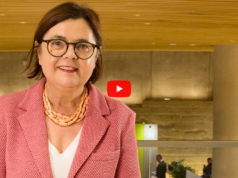Ulf Teichgräber (Jena, Germany) and Edward Choke (Singapore) discuss—at the 2022 Charing Cross (CX) International Symposium (26–28 April, London, UK)—some of the key benefits of sirolimus-coated balloons and the key differences between these devices and ones coated with paclitaxel.
One of these, states Choke, is that sirolimus “has the advantage of having more anti-migratory properties on smooth muscle cells” and that the drug is also “designed as an anti-inflammatory agent”. However, he also notes that “it is harder to coat sirolimus onto the balloon” and even if it coated, “it is also harder to transfer onto the vessel wall and retain it for longer periods of time”.
Choke goes on to describe his early experience using the MagicTouch sirolimus drug-coated balloon (Concept Medical) in peripheral arterial disease patients. He also highlights the results of the XTOSI first-in-man trial which showed that for below-the-knee arteries the patency rates at six months were an “excellent” 74%.
Teichgräber discusses the safety profile of the MagicTouch balloon, saying that he was “very astonished” at the ulcer healing rate of the “extremely ill patients” in the XTOSI trial. “What we have to do today is convince the whole community that sirolimus-coated balloons are a clear alternative to paclitaxel-coated balloons”, he adds.
“We really need a head-to-head comparison which is the reason why we designed and started the international multicentre SIRONA randomised controlled trial,” says Teichgräber. The trial aims to show non-inferiority of the MagicTouch compared with a paclitaxel drug-coated balloon for the treatment of femoropopliteal occlusive artery disease.
This video is sponsored by Concept Medical.













